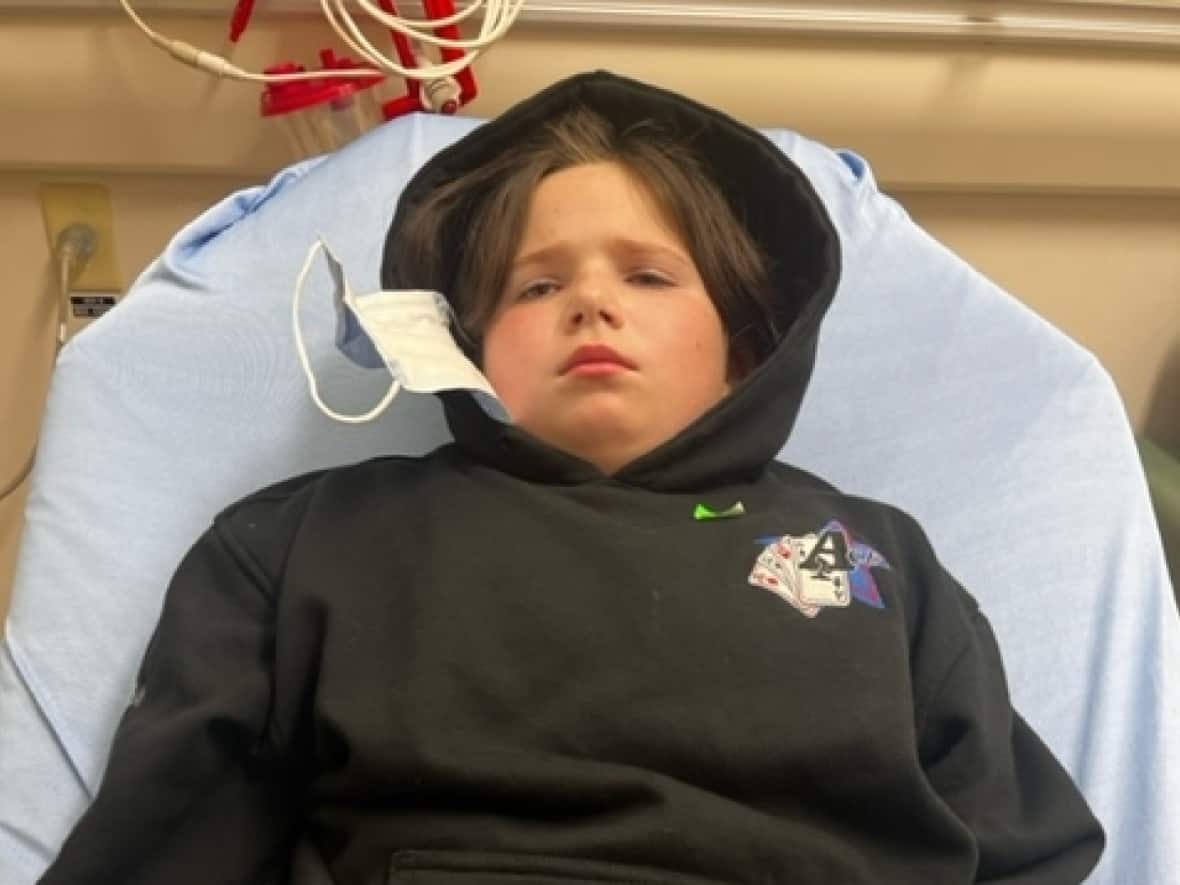'Perfect storm' has Albertans waiting long hours in backlogged hospital emergency rooms

Zolton Yaremie is weary after an exhausting ordeal at the emergency room with his daughter.
The family lives in Andrew, Alta., so he first took nine-year-old Hailey to the hospital in Lamont, about 30 kilometres away, when her abdominal pain became severe on Friday.
Unable to get a CT scan at in Lamont, Yaremie and Hailey were told to go to the emergency department at Edmonton's Stollery Children's Hospital — a 70-kilometre drive away.
The pair arrived around 1:30 p.m. "By the time we actually got in and sat in a bed, I think it was just after 10 p.m.," Yaremie said.

On Monday, the little girl still wasn't feeling better. So they returned to the emergency room for another eight-hour wait.
"I think the most frustrating thing for me was seeing my daughter in the state that she was and not being able to do anything about it," Yaremie said.
"Anyone with a kid — you want to take their pain away and take it for yourself," he said. "I would sit there for how many hours it took if I could take it away from her."
'Perfect storm'
Yaremie is one of many Albertans who have been waiting hours upon hours in the province's emergency departments.
Wait times can vary by hospital and depend on the time of day, but can sometimes range from two hours to 17 hours.
Nazeem Muhajarine, an epidemiologist with the University of Saskatchewan, said some hospital pressure is the result of COVID-19 patients but there are other factors.
He said some patients who postponed care during the pandemic and others who generally need care and, on top of that, we are now moving into the flu and cold season.
"It's like a perfect storm where the demand hasn't dissipated for care," Muhajarine said.
"On the supply side, there's real gaps and deficits that are presenting with supply."
Health-care workers concerned
Heather Smith, president of the United Nurses of Alberta, said Monday that there is a staffing crisis in the province.
"It didn't happen overnight and it didn't just happen because of COVID. It has been building," she said.
"We need to retain the workforce we have. We've got to stop the bloodletting and try to stabilize our workforce. We have to look at what we can do in terms of encouraging the return of workers."
Over the course of the pandemic, health-care workers — exhausted by the ups and downs of various COVID-19 waves — have left the workforce.
Those who remain are doing what they can to fill the gaps left behind, said Sandra Azocar, vice-president of the Alberta Union of Provincial Employees.
"We've got to stop the bloodletting and try to stabilize our workforce." - Heather Smith
"Our members are being asked consistently to work extraordinary and unsafe amount of hours to basically fill the gaps of the staffing shortages that we see across the health-care system," Azocar said.
"That's creating havoc not only for our members but also for Albertans who depend on a public system that is responsive to their needs."
Both unions, along with others representing health-care workers, are asking for a meeting with Jason Copping, Alberta's newly reappointed health minister.
AHS response
Alberta Health Services acknowledges that hospitals across the province are dealing with increased patient volumes in emergency departments.
It said that in the first quarter of 2022, there were 505,421 emergency department visits in Alberta, an increase of 15 per cent from the same time period in 2021.
"We acknowledge that in some instances, wait-times are too long," said AHS spokesperson Kerry Williamson.
"Flow through the emergency department is dependent on the entire system. We appreciate the work of our physicians and frontline staff and are working closely with them to improve access and bring wait-times down," .
Williamson said that AHS continues to "aggressively recruit" frontline health-care workers.
He said AHS has 270 more staff working in emergency departments today than a year ago, and 783 more staff when compared to April 2018.
As for Yaremie, he has empathy for those in the health-care system.
"You sit there for eight hours and you see somebody triaging people all the time and then the doors [are] just revolving… There's no break for them," he said.
"They could work from the beginning of the end of their shift and not take a break and still not gain any ground."


